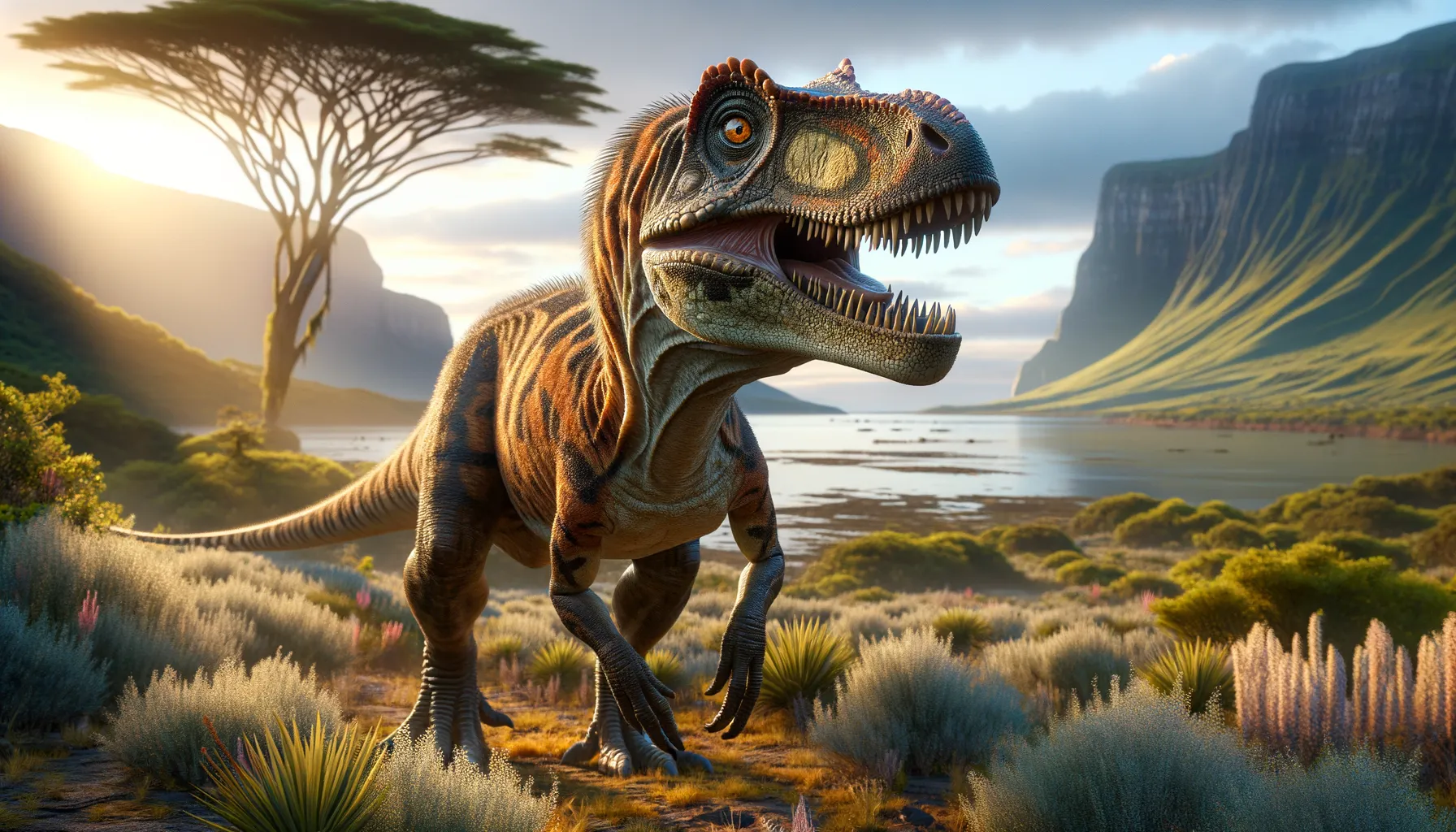
Masiakasaurus
A Cretaceous predator with a quirky bite!
Period
Cretaceous
Length
Approximately 6 feet long.
Height
About 2.6 feet at the hip.
Weight
60 to 70 pounds.
Masiakasaurus was a small theropod dinosaur with a distinctive overbite, known from fossils found in Madagascar. Its unusual forward-facing teeth suggest a specialized diet, possibly including fish and small vertebrates. Living during the late Cretaceous period, Masiakasaurus was an agile predator, adapting to its environment with unique hunting strategies. The discovery of this dinosaur has shed light on the diversity of theropods in Madagascar and their evolutionary pathways.
Diet
Masiakasaurus likely had a diet consisting of fish and small vertebrates. Its forward-facing teeth suggest it was well-adapted to grasp slippery prey. Occasionally, it may have scavenged for food, making it a versatile feeder.
Hunting
Masiakasaurus employed a hunting technique reliant on agility and speed. Its sharp, forward-pointing teeth were ideal for catching fast-moving prey. Unlike larger predators, it likely relied on stealth and quick attacks.
Environmental challenges
Masiakasaurus faced environmental challenges typical of the Cretaceous period, such as variable climate conditions and competition for resources. Its habitat was influenced by periodic changes in sea levels, affecting food availability. Adaptations in diet and hunting may have helped it survive in such a dynamic ecosystem.
Speed
Moderate, capable of quick sprints.
Lifespan
Approximately 10 to 15 years.
First discovery
Discovered in Madagascar in 2001.
Fun Facts
- Masiakasaurus was a small dinosaur, only about 2 meters (6.5 feet) long.
- This dinosaur lived around 70 million years ago in what is now Madagascar.
- Masiakasaurus had forward-facing, protruding teeth unlike most other predatory dinosaurs, perfect for catching small prey.
- It was a member of the theropod group, which includes famous predators like Tyrannosaurus rex, but Masiakasaurus was much smaller and lighter.
- Paleontologists believe Masiakasaurus may have been an omnivore, eating both small animals and plants.
- The name 'Masiakasaurus' means 'vicious lizard' in reference to its unique dentition.
- Fossils of Masiakasaurus provide important insights into the diversity of predatory dinosaurs in the Late Cretaceous period.
Growth and Development
Masiakasaurus showed rapid growth during its juvenile phase, similar to other theropods. It likely reached maturity in a few years, which was essential for survival. Developmental changes included extended limbs and specialized teeth adaptation.
Habitat
Masiakasaurus lived in a relatively warm, semi-arid environment in what is now Madagascar. Its habitat included rivers and coastal areas, providing abundant resources such as fish. Seasonal variations would have influenced its lifestyle and migratory patterns.
Interaction with other species
Masiakasaurus may have competed with other small theropods for food. It coexisted with various herbivorous dinosaurs, potentially preying on their young. The presence of larger predators necessitated constant vigilance and strategic avoidance.
Natural lifespan
Masiakasaurus had a natural lifespan of around 10 to 15 years.
Reproduction
Masiakasaurus likely laid eggs, as suggested by its phylogenetic relations to other theropods. Nesting sites would have been chosen for safety from predators. The young required quick growth to reduce vulnerability.
Social behaviour
There is limited evidence on its social behaviour, but Masiakasaurus may have exhibited solitary or loosely banded behaviours. Territorial behaviour would have been essential to protect feeding grounds. Occasional congregations around abundant food sources are plausible.
Fossil locations
Fossils of Masiakasaurus have been found exclusively in Madagascar. The original specimens were discovered in the Mahajanga Basin. These findings indicate that the region was once inhabited by a diverse group of dinosaurs.
